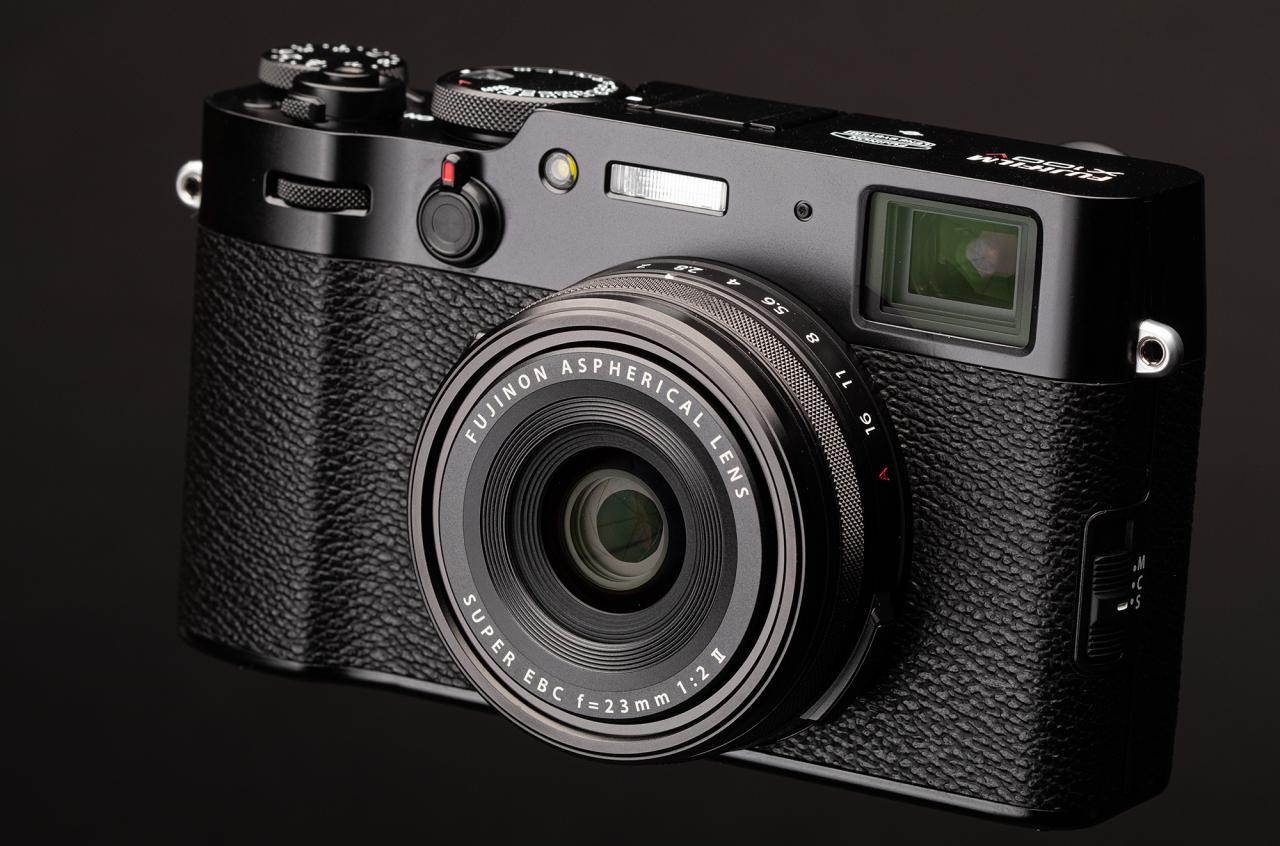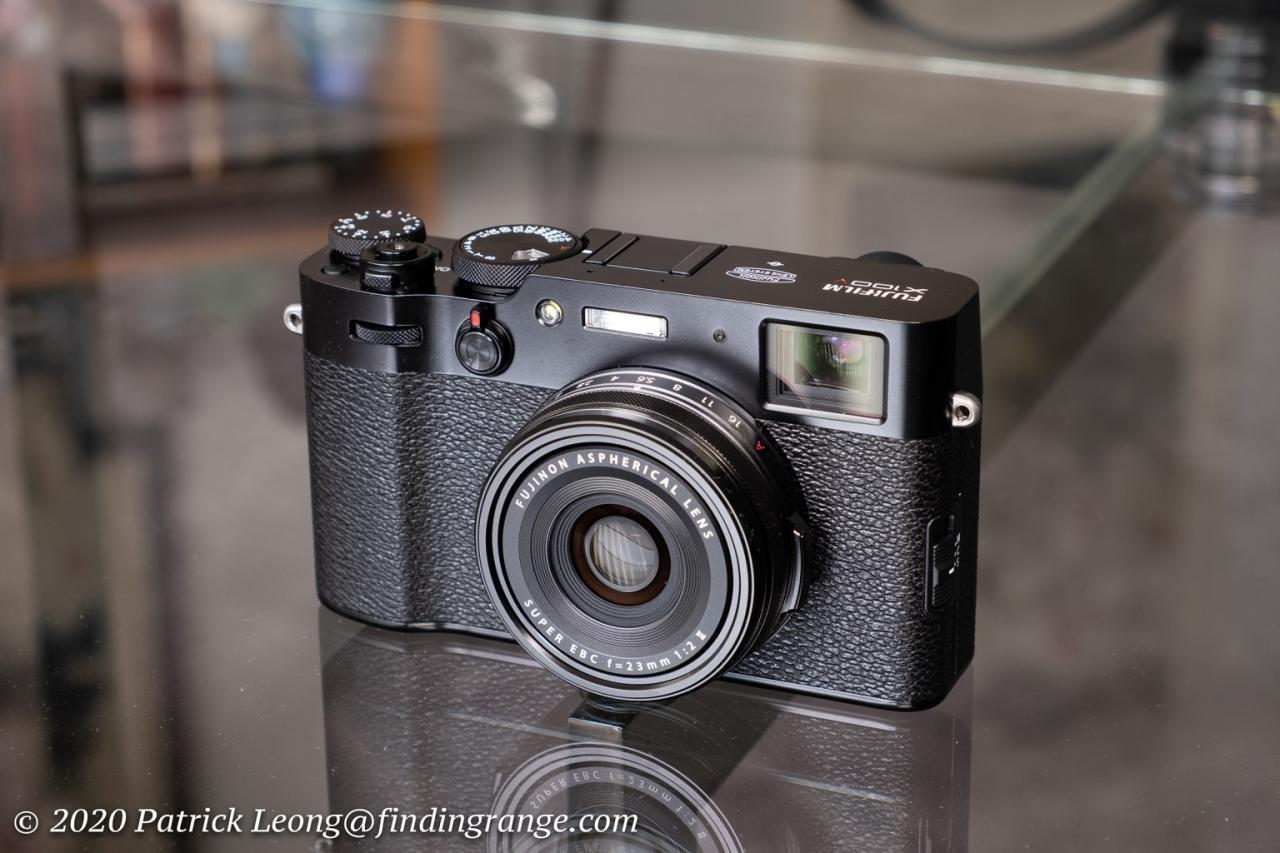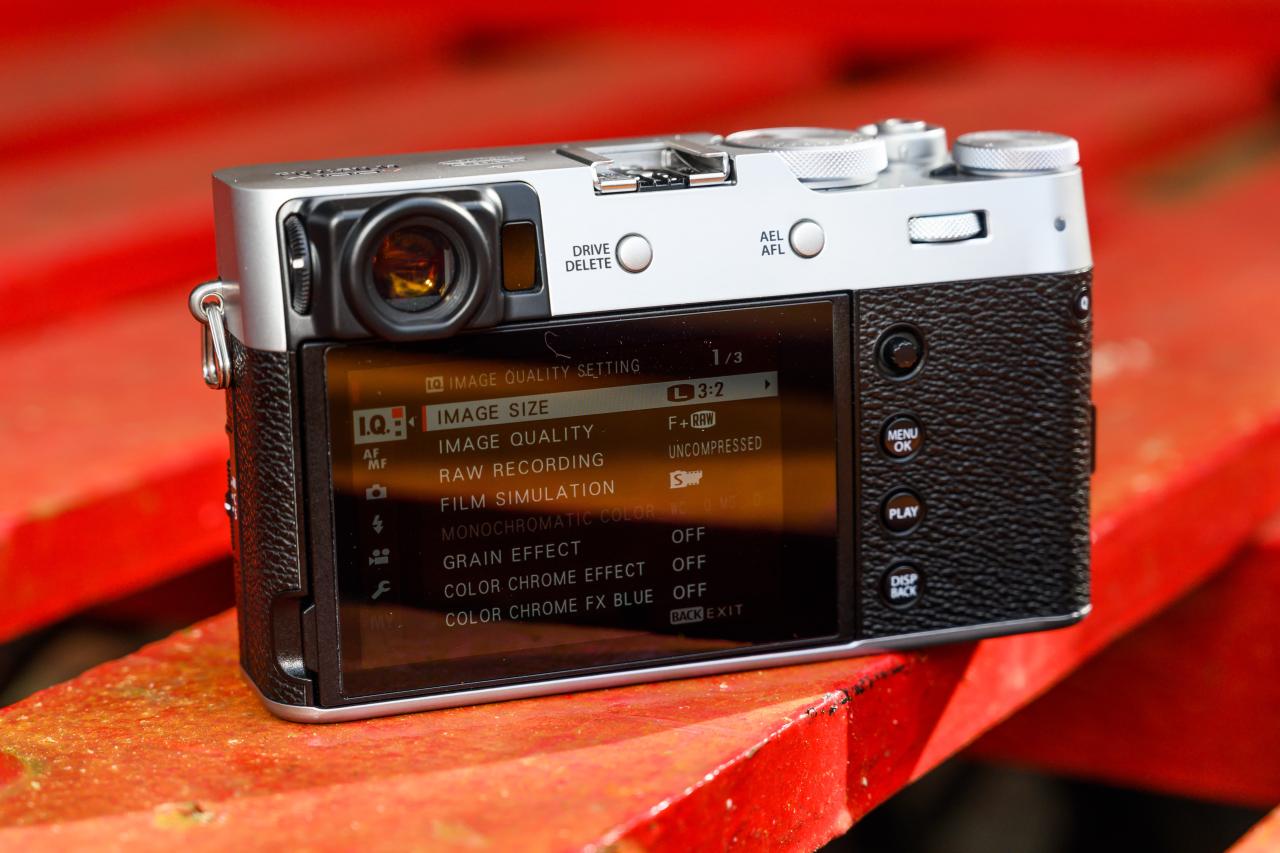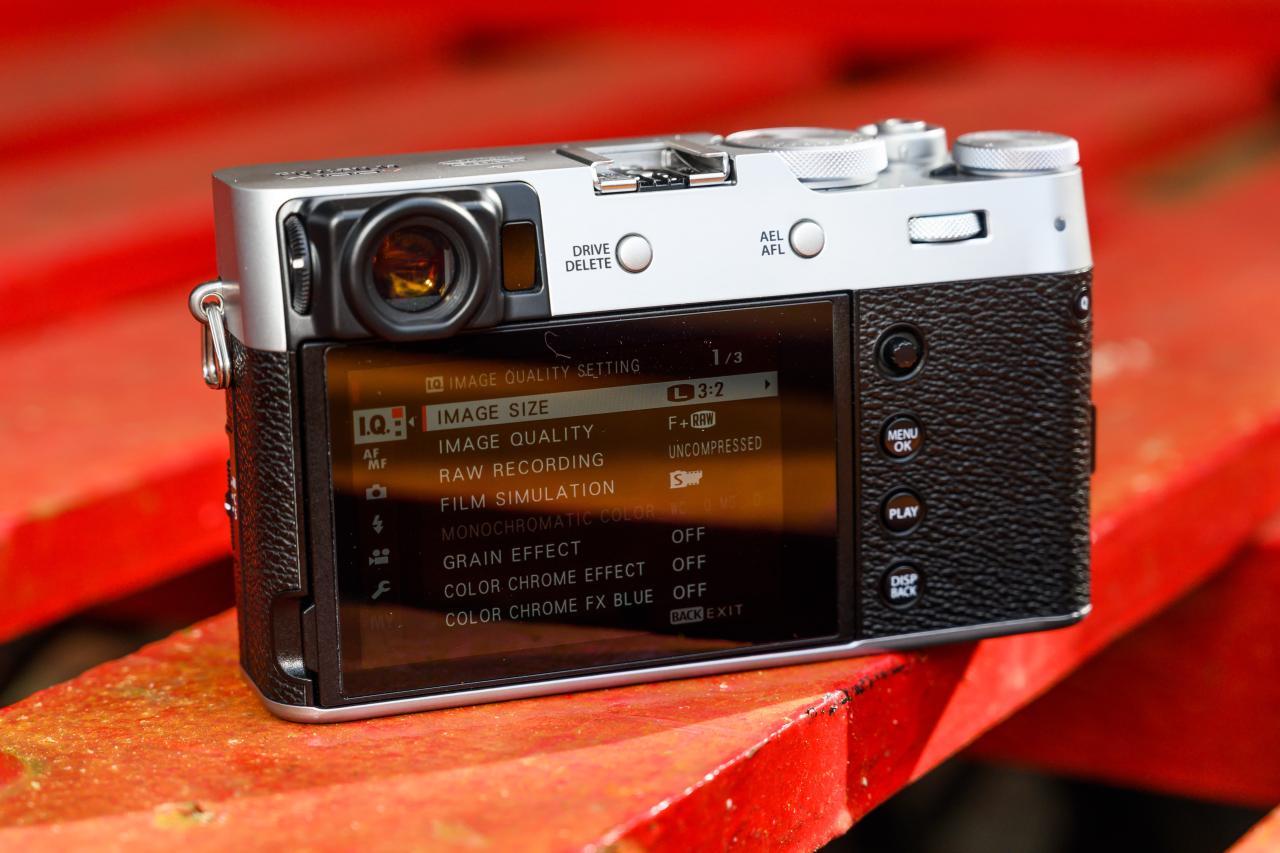Fujifilm X100V: A compact camera powerhouse, the X100V seamlessly blends retro aesthetics with cutting-edge technology. This review delves into its key features, image quality, user experience, and video capabilities, providing a comprehensive assessment of its strengths and weaknesses. We’ll explore its unique film simulations and examine how it stacks up against competitors in its class. Prepare for an in-depth look at this highly regarded camera.
From its exceptional image sensor and refined lens to its intuitive controls and versatile film simulations, the X100V offers a compelling package for both seasoned photographers and enthusiastic newcomers. This review aims to provide a balanced perspective, highlighting both the advantages and limitations of this popular camera.
The Fujifilm X100V, with its exceptional image quality and compact design, is a popular choice for street photography. Its versatility extends beyond personal use; professionals might even consider it for specific assignments, perhaps supplementing their equipment with a more robust system like the one offered by port dover camera for larger-scale projects. Ultimately, however, the X100V remains a highly capable and portable camera ideal for capturing everyday moments.
Fujifilm X100V: A Deep Dive
The Fujifilm X100V, a compact powerhouse, seamlessly blends retro aesthetics with modern technology. This in-depth review explores its key features, image quality, user experience, film simulations, and video capabilities, providing a comprehensive understanding of this celebrated camera.
Fujifilm X100V Camera Overview

The X100V boasts a 26.1MP X-Trans CMOS 4 sensor and the X-Processor 4, delivering exceptional image quality. Its fixed 23mm f/2 lens (35mm equivalent) offers a versatile focal length ideal for street photography and everyday snapshots. The fixed lens design contributes to the camera’s compact form factor and enhances image sharpness.
Compared to its predecessors and competitors, the X100V stands out with improved autofocus, a more robust build, and refined ergonomics. Its image quality rivals many larger, more expensive cameras, offering exceptional detail and dynamic range.
| Model | Sensor | Lens | Key Features |
|---|---|---|---|
| X100 | 16.3MP X-Trans CMOS I | 23mm f/2 | Hybrid Viewfinder, Film Simulations |
| X100T | 16.3MP X-Trans CMOS II | 23mm f/2 | Improved Autofocus, Wi-Fi |
| X100F | 24.3MP X-Trans CMOS III | 23mm f/2 | Improved AF System, Classic Neg Film Simulation |
| X100V | 26.1MP X-Trans CMOS 4 | 23mm f/2 | Improved Autofocus, Tilting LCD Screen, Weather Resistance |
Image Quality and Performance

The X100V’s dynamic range is exceptional, capturing details in both highlights and shadows with impressive accuracy. Low-light performance is also commendable, producing clean images even at higher ISO settings. The camera excels in various scenarios, including street photography, landscape, and portraits.
While the X100V generally delivers excellent image quality, potential limitations include slight noise at very high ISO settings and potential chromatic aberration in challenging lighting conditions. These limitations are, however, minor and easily manageable through post-processing.
The Fujifilm X100V, with its exceptional image quality and compact design, is perfect for capturing everyday moments. Imagine using it to photograph the stunning views often seen on the port dover live camera , then immediately sharing the high-resolution images. The X100V’s versatility makes it ideal for both spontaneous street photography and carefully composed landscape shots, ensuring you’re always ready to capture the perfect image.
| Lighting Condition | Image Description | ISO Setting | Overall Quality Assessment |
|---|---|---|---|
| Bright Sunlight | Sharp details, vibrant colors, excellent dynamic range. | ISO 200 | Excellent |
| Overcast Day | Good detail, natural colors, slight noise reduction applied. | ISO 400 | Very Good |
| Low Light (Indoor) | Acceptable detail, slight noise visible, colors remain accurate. | ISO 3200 | Good |
User Experience and Ergonomics, Fujifilm x100v

The X100V’s physical controls are a joy to use. The dials and buttons are well-placed and responsive, offering a tactile and intuitive shooting experience. The menu system is relatively straightforward, although some users may find it less intuitive than other camera systems. The camera body itself feels solid and well-built, providing a premium feel in the hand.
Compared to other compact cameras, the X100V offers a superior level of control and customization. Its retro design and physical controls provide a more engaging and satisfying shooting experience than many touchscreen-only alternatives.
- Pros: Excellent physical controls, premium build quality, intuitive (though not entirely simple) menu system.
- Cons: Menu system could be more streamlined, limited video features compared to some competitors.
Film Simulations and Features
The X100V offers a range of Fujifilm’s renowned film simulations, each emulating the look and feel of classic film stocks. These simulations provide unique color profiles and tonal characteristics, allowing for creative control over the final image. Classic Chrome offers muted tones and subtle color shifts, while Acros provides exceptional detail and smooth gradations in monochrome images.
Each film simulation imparts a distinct aesthetic to the image. For example, applying “Provia” results in a natural and vibrant image, while “Velvia” delivers highly saturated and punchy colors. “Astia” produces softer, more delicate tones. Visual differences are apparent in color saturation, contrast, and overall tone.
Imagine a scene of a red brick building under a clear blue sky. Provia would render the scene accurately and naturally. Velvia would heighten the reds and blues, making them more intense. Astia would soften the colors, resulting in a more subdued and delicate representation. Classic Chrome would create a more muted and film-like look, with subtle color shifts.
Acros, in monochrome, would emphasize texture and detail in the brickwork, producing a timeless image.
Video Capabilities
The X100V offers 4K video recording at up to 30fps, alongside Full HD options at higher frame rates. While not a dedicated video camera, the X100V produces decent video quality with good detail and color reproduction. Its strengths lie in capturing cinematic footage in various settings, particularly those where its fixed lens is suitable.
Compared to cameras solely focused on video, the X100V’s video features are less extensive. However, it provides a capable option for users who want to capture high-quality video alongside stills. Its strengths are its compact size and ease of use for casual videography.
Example Video Script: Scene: A bustling city street at sunset. Camera Settings: 4K 24fps, Film Simulation: Classic Chrome. Desired Visual Effect: A cinematic, moody atmosphere capturing the energy of the street while emphasizing the warm sunset colors. The camera would be handheld, using the natural movement to add a sense of dynamism to the footage.
The Fujifilm X100V stands as a testament to the power of combining classic design with modern technology. While possessing certain limitations, its exceptional image quality, intuitive user experience, and unique film simulations make it a highly desirable camera for those seeking a blend of portability, performance, and creative control. Whether you’re a street photographer, travel enthusiast, or simply appreciate a well-crafted piece of photographic equipment, the X100V deserves serious consideration.
Popular Questions
What is the battery life like on the Fujifilm X100V?
Battery life is generally considered adequate for a day’s shooting, but carrying a spare battery is recommended, especially for extended use.
Does the Fujifilm X100V have image stabilization?
No, the X100V does not have in-body image stabilization. However, the lens itself is quite sharp and generally produces stable images, especially when using faster shutter speeds.
Can I use external microphones with the Fujifilm X100V?
Yes, the X100V has a 3.5mm microphone input jack for connecting external microphones.
What type of memory cards does the X100V use?
The X100V uses SD cards (SD, SDHC, and SDXC).
